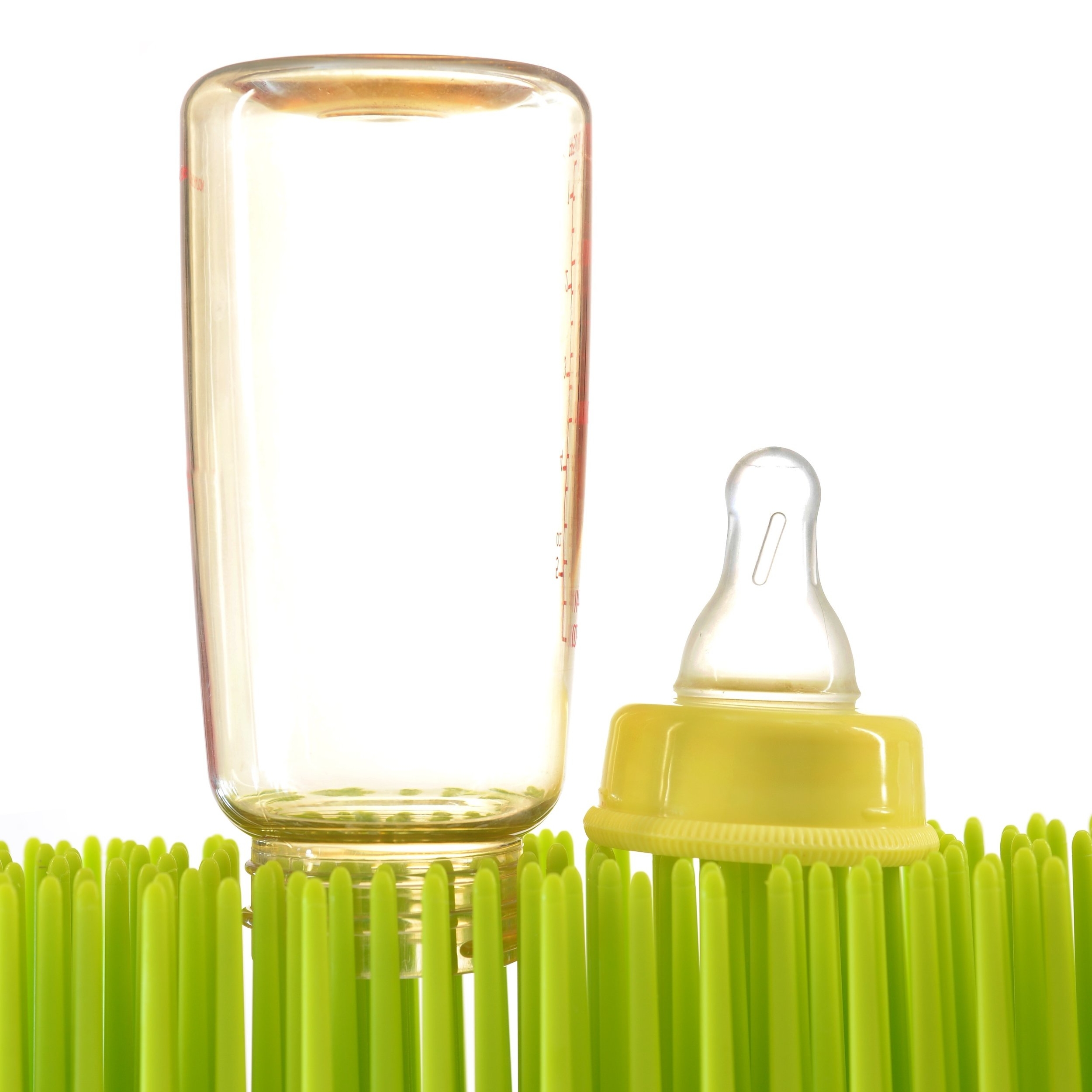
Still have questions? Ask an Expert!
We'll get back to you within 1-2 business days.
Whether you plan to feed your newborn breastmilk or formula or a combination of the two, there are many reasons to have baby bottles. After research found hormone-disrupting bisphenol A (BPA) in many hard plastic baby bottles, public outcry, advocacy and policy drove a dramatic change in the sector. Now you can find a variety of plastics, glass, and stainless steel bottles on the market.
While BPA captured widespread attention for its estrogen-like effects on developing bodies, further research has found hormone-disrupting chemicals leaching from a number of plastics. Today's hard, clear plastics can include BPS, another bisphenol, or other hormone-disrupting chemicals. Glass bottles are free of chemical hazards. High-quality stainless steel also poses few chemical hazards, though some insulated bottles have tested positive for lead in the seals on the outside bottom of the bottle. Nipples can be made of latex, which may turn out to be an allergen for your baby. Silicone has become the primary material for nipples, and food-grade silicone appears to be safer.
If you choose plastic bottles, discard them when they become cloudy or scratched. This isn't about looks - as plastic gets older, small breaks in the surface can release additives or basing building materials. Don't use nipples that have cracks or tears. Glass bottles can break, though newer bottles are often made of tempered glass to minimize this. Silicone sleeves can be used to protect glass bottles if this is a concern for you.
The Getting Ready for Baby campaign specifically recommends products that have been certified MADE SAFE. For baby bottles, this includes products from Pura Stainless, which are MADE SAFE Nontoxic Certified.
Beyond that, choose safer materials:
Glass bottles (if you're concerned about breakage, consider a silicone wrapper)
Stainless steel
Polypropylene
For nipples, seek silcone nipples made for the age of your baby (this affects flow rate).
There are disposable bags for expressing breast milk, and while these appear to be made of safer plastics (low-density polyethylene - LDPE indicated with recycling symbol #4), they are disposable and made from petroleum products. There is no real method for recycling these.
If you use plastic bottles, they shouldn't be used once they are visibly scratched, as any chemicals of concern present can leach more easily into the bottle contents.
MADE SAFE has certified the following products:
Pura Stainless
Kiki 5 Oz Infant Bottle ($16.49)
Multiple Color Options
Kiki 5 Oz Infant Starter Set ($44.99)
Multiples Color Options
Kiki 11 Oz Infant Bottle ($18.49)
Multiples Color Options
Kiki 11 Oz Infant Starter Set ($49.99)
Multiples Color Options
Learn more about the hidden hazards by reviewing the glossary or take a deep dive by reading Safer Products for Babies and Toddlers: Resources and Recommendations for Retailers.